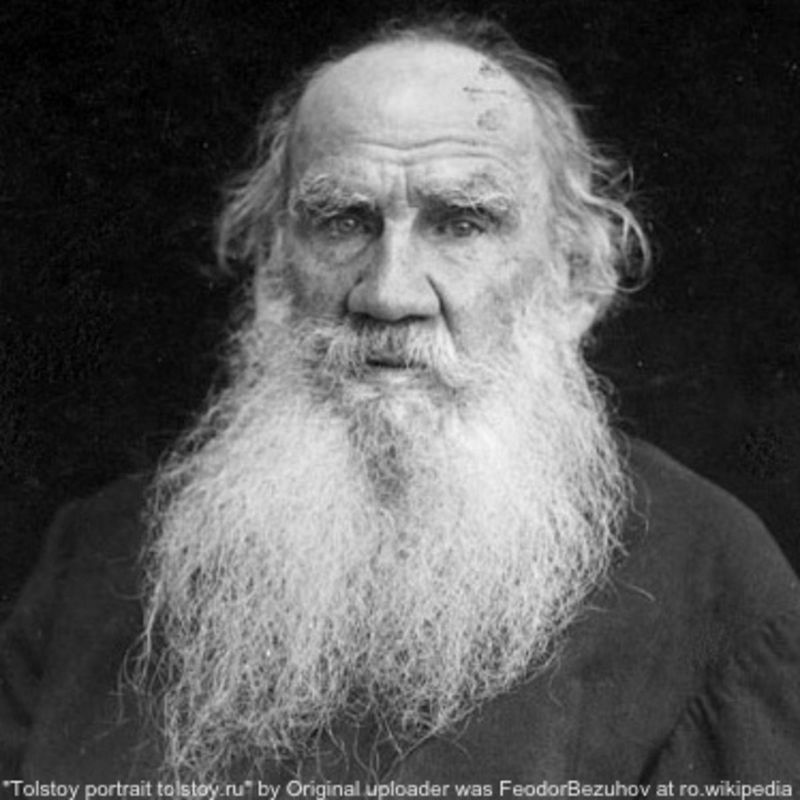History and the Art of Storytelling
In The Practical Past, Hayden White writes that “history reads us moral lessons, whether we would have it or not, simply by virtue of the casting of its accounts of the past in the form of stories” (White 20). Indeed, he argues that in relating history, historians are telling a story; a historical account is the product of both the language of the storyteller, and the individualized interpretation of the reader. There is thus inherent biases within historical accounts—no set of words can equate to exactly one idea, but to a plethora of interpretations, some in which the narrator did not even intend. However, in War and Peace, Tolstoy frames his historical account of the Battle of Borodino as a fictional narrative, providing a realistic, historically accurate depiction of the battle through the lens of fictitious characters, particularly that of Pierre, who naively stumbles upon the battlefield to watch the horrendous scene. By deliberately writing his historical account as fiction, Tolstoy bypasses White’s criticism of many historical accounts—that through literary means, the line between fact and fiction is blurred. Interestingly, the fact that Tolstoy's writing is fiction is indisputable, but the fact that it is a historical document is arguable as well. War and Peace—particularly the scene in which the ungainly Pierre finds himself in the midst of the Battle of Borodino—demonstrates that narrative is a particularly effective means of conveying history, as it reduces the variability in interpretation that White warns against; if history is conveyed from the perspective of a character—whether he be genuine or fictional—then the reader has little choice but to witness history unfold from the same point of view.
Tolstoy uses Pierre as a medium through which the reader can comprehend the confusion and spontaneity that was inherent to the Battle of Borodino. Interestingly, he conveys the sense of urgency and puzzlement that the soldiers undoubtedly felt by appealing to the emotions of fictional characters. He writes, “They all looked with equally displeased and questioning eyes at this fat man in a white hat, who for some unknown reason was trampling them with his horse” (Tolstoy 791), demonstrating how easily he can pull the reader into a particular perspective and make the story seem convincing, despite its fictional elements. Moreover, after establishing his control as a storyteller, he reminds the reader that these characters, although imaginary, are representative of real men partaking in an actual historical event. He writes, “Without knowing it himself, Pierre had come as far as the bridge over the Kolocha, …which the French (having taken Borodino) attacked in the first action of the battle” (Tolstoy 791). Through the medium of his character, Pierre, Tolstoy orients the reader to the historically accurate setting, thus flaunting the benefits of the story telling craft in conveying of history.
White emphasizes that through story telling, history can provide lessons on morality. Indeed, Tolstoy utilizes the art of narrative—replete with a naïve and pitiful character like Pierre—to draw sympathy from readers. For example, after Pierre speaks with the adjutant, Tolstoy writes, “They saw no more of each other, and much later Pierre learned that this adjutant had had his arm shot off that day” (Tolstoy 792). This chilling detail—fictional, but historically feasible—garners sympathy from readers; not only does Tolstoy give a historically accurate depiction of he Battle of Borodino, but he also urges the reader to comprehend the consequences of war alongside child-like Pierre. Moreover, Tolstoy uses the sympathy of his readers in order to convey the likely emotional state of a soldier in the Battle of Borodino. He uses Pierre—a fictional character—as a medium through which the soldiers find some humor and enjoyment in their desolate situation. He writes, “Several soldiers with cheerful and gentle faces stopped near Pierre. It was as if they did not expect him to talk like everybody else and were glad of this discovery” (Tolstoy 794), diluting the tension that precedes the Battle of Borodino with humor, as the actual soldiers likely did at this historical event. Thus by appealing to the emotions and morality of readers—which White points out is a role of history—Tolstoy conveys aspects of the Battle of Borodino that would not have been conveyed in a non-narrative form.
Tolstoy thus uses the structure inherent to a fictional narrative to organize the details of the historical event. White writes, “natural languages come laden with a cargo of connotations over which writers and speakers have no control and which scatters meaning over referents” (White 20). Tolstoy, however, uses the story telling structure that readers are familiar with in order to prevent the readers from making hasty predictions. For instance, the reader is aware that the relative calm and bantering nature of the battle before the violence commences will indeed be followed by tension and excitement—as this is how the plots of stories typically proceed. Thus, the narrative allows Tolstoy to have control over both the history and readers’ interpretations of the history, despite White’s claims otherwise.



